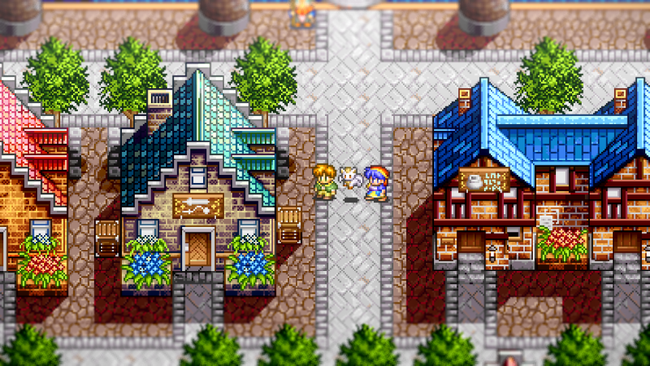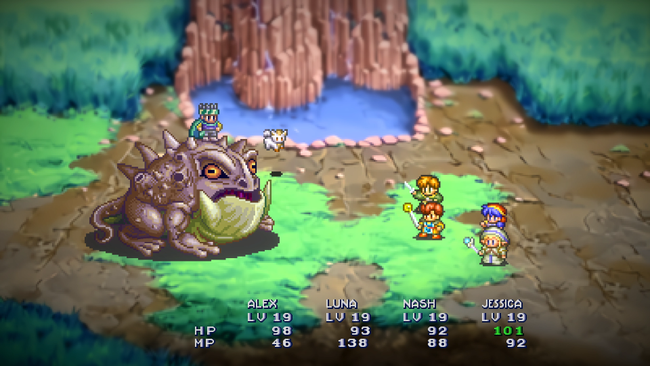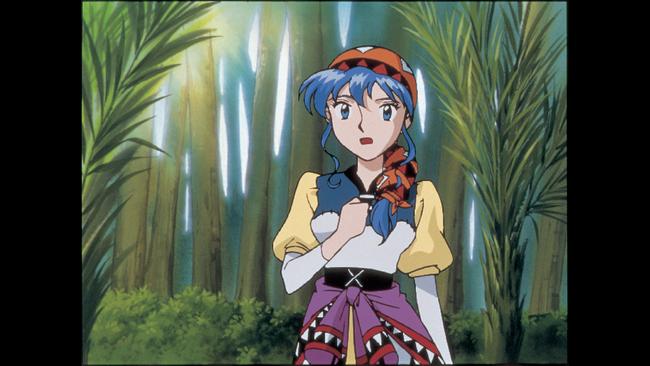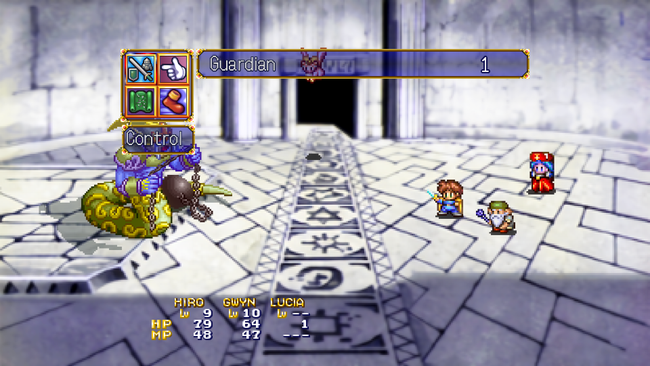
Lunar Remastered Collection Review
What does it mean for something to 'age well'? People toss the phrase around when talking about almost anything - food, the physical appearance of celebrities & politicians, and especially when discussing the arts. We're constantly re-evaluating the impact and legacy of older games, particularly when debating the merits of remasters presented to a new generation of gamers.
It can be a gambit to bring something back around for a second (or third) round, especially when advancements in technology and design can impact cultural and commercial reception. The Lunar Remastered Collection - a remaster of two PlayStation remakes of Sega CD games from 1992 and 1994 - brings a handful of tweaks to the beloved series without meddling too much with an established flavor. It seems to know that some things do get better with age, even if it has more wrinkles than we remember.

Developed by Game Arts, Lunar: The Silver Star was released in Japan in 1992 before Working Designs localized it for a North American release the following year. The story centers around Alex, a young, aspiring hero who, along with his friend Luna and Ramus, leaves the village of Burg on a mission to become a Dragonmaster like his idol, Dyne. Along the way, Alex makes allies with mages, a rowdy cleric, and even her rowdier bandit boyfriend. Together, they uncover the sinister machinations of an old hero meant to upend the world order.
Its sequel, Lunar: Eternal Blue, set 1,000 years after the events of the first game, continued the Lunar saga with the exploits of Hiro, another young adventurer with heroic aspirations. His story intersects with Lucia, a blue-haired woman with mysterious origins, claiming to be from the Blue Star. Together, they set off to stop Zophar, an evil entity bent on destroying the world. Along the way, Hiro assembles a ragtag group of allies, including a lapsed priest, a lethal dancer, and a greedy mage, complete with a handful of charming throwbacks to characters and events from Silver Star.
Both games are traditional turn-based combat JRPGs with pixel 2D graphics. While the original Sega CD titles had random encounters, the remake series replaced these with on-screen enemies in dungeons and no encounters on the world map. Players travel through towns and dungeons as the story dictates, upgrading equipment at regular intervals. Combat techniques and abilities are learned at predetermined levels, and the player has no control over the party makeup, which is instead governed by the narrative.

In combat, players will assign actions to each combatant, which will then be executed in order based on speed, ability type, and other statistics. Characters can strike with a weapon, launch an ability or spell, or use an item. Both games feature an auto-combat option with limited but useful options to choose from in terms of instructions, like commanding a character to refrain from using items or consuming MP to cast spells.
The games were successful on the Sega CD, enough so that remakes were designed for the Sega Saturn and then ported over the Playstation, titled Lunar: Silver Star Story and Lunar: Eternal Blue Complete in 1998 and 2000, respectively. Silver Star is generally regarded as the more classic, nostalgic tale, while Eternal Blue has more complex themes, a longer script, and even more of the dazzling anime cutscenes featured in the first. Silver Star would see two more remakes - one for Game Boy Advance in 2002’s Lunar Legend and a PSP remake titled Silver Star Harmony in 2009 - and even a robust mobile version, while Eternal Blue has otherwise been sequestered on the first PlayStation for 25 years, making it’s re-debut in this collection remarkable and arguably worth the price of admission alone, given the title’s lofty status in the vintage gaming scene.
It’s easy to find a Lunar fan, especially in circles where JRPGs are popular, with many fans either still holding on to the gorgeous collector’s editions of the PlayStation remakes or longingly staring at them in a display case at a retro games store. These games are classic, and for good reason. While the first two Lunar games are a known quantity, the announcement of this remaster project did give some pause. After all, not every remaster effort is shown the love it deserves. Thankfully, Silver Star and Eternal Blue are given refreshes that do the original titles justice.
While this is unquestionably the definitive version of Eternal Blue, there are some quality-of-life tweaks puzzlingly missing from this version of Silver Star Story that are present in at least one other version, the recently updated mobile version called Silver Star Touch. That version has a boggling number of options, as Mikhail noted in this comparison. I think it would be nice to have those options here, although to me it’s more bemusing than frustrating.
The quality of life touches here are worthwhile, though. Players have three combat speeds to toggle between in battle, significantly shortening the duration of random battles, addressing one of my primary qualms with the original games. Thankfully, the energetic battle themes are not sped up during battle, allowing players to savor the music, as well as hearing the characters’ battle calls. These speed options are not available outside of combat, although the dungeon and town maps are generally small enough that they are not needed.

Another, more significant complaint from the original games is also addressed through item management. Previously, each character had limited inventory space, and exchanging items was cumbersome. Worse, though, each character needed an item in their specific inventory to use it in combat. Here, players are able to access a shared inventory, making it easier to manage inventory and actually use the items in a fight. For those so inclined, they can toggle the original inventory mechanic in the options. Where it counts, these remasters make some quiet corrections to marginal design frustrations, making them feel more balanced.
There are a few graphical options in the menu, including an optional effect that renders the top and bottom of the screen a bit blurry. I didn’t find the effect appealing, so I quickly turned it off. The sprite graphics are as charming as ever, and this remaster makes few, if any, changes to the character and enemy sprites. Even smaller details, like combat icons or even font type and colors are similar enough to activate the nostalgia receptors. The original battle backgrounds have been retained, looking a bit stretched in Remastered mode. Frankly, I prefer this imperfect approach as opposed to replacing it with something generic.
Likewise, Noriyuki Iwadare’s PlayStation-era soundtracks return in their full glory, a relief for those who may not have liked the arrangements in Silver Star’s PSP remake. The scripts appear to be slightly modified versions of the 90s set, removing some of the worst Working Designs anachronisms and pop culture quips, but still maintaining the irreverent and sassy attitude. Both games are full of funny throwaway lines that will crack a smile without making a joke about Bill Clinton. A new English cast recording is standout, too.

In a way, what makes these remastered games so successful is that they don’t mess with the secret sauce all that much. That’s already been done before, and by GameArts back in the 1990s when they produced the Saturn/PlayStation versions. These remasters so effectively capture the look, sound, and hell - even the font types - that are burned in the memories of a generation. That’s why the inclusion of the classic modes is a bit puzzling to me. The touched-up version is a best of both worlds approach that really looks like you remembered while playing, like your attention span in 2025 demands. Including the SegaCD versions of the game would have been an absolute rip. I’m sure someone will be happy it is there, but I’m fine using my entire TV screen.
These games are great, breezy, and iconic representations of anime-styled fantasy JRPGs in the 1990s. To that end, this is a great compilation, and I am grateful to finally have Eternal Blue released from its prison. However, the lack of options included in the iOS version of Silver Star Story holds this collection back, even if slightly. That said, the love for the series is evident by the care taken to preserve them with these slight updates that still hew to the memory of the PSX classics.